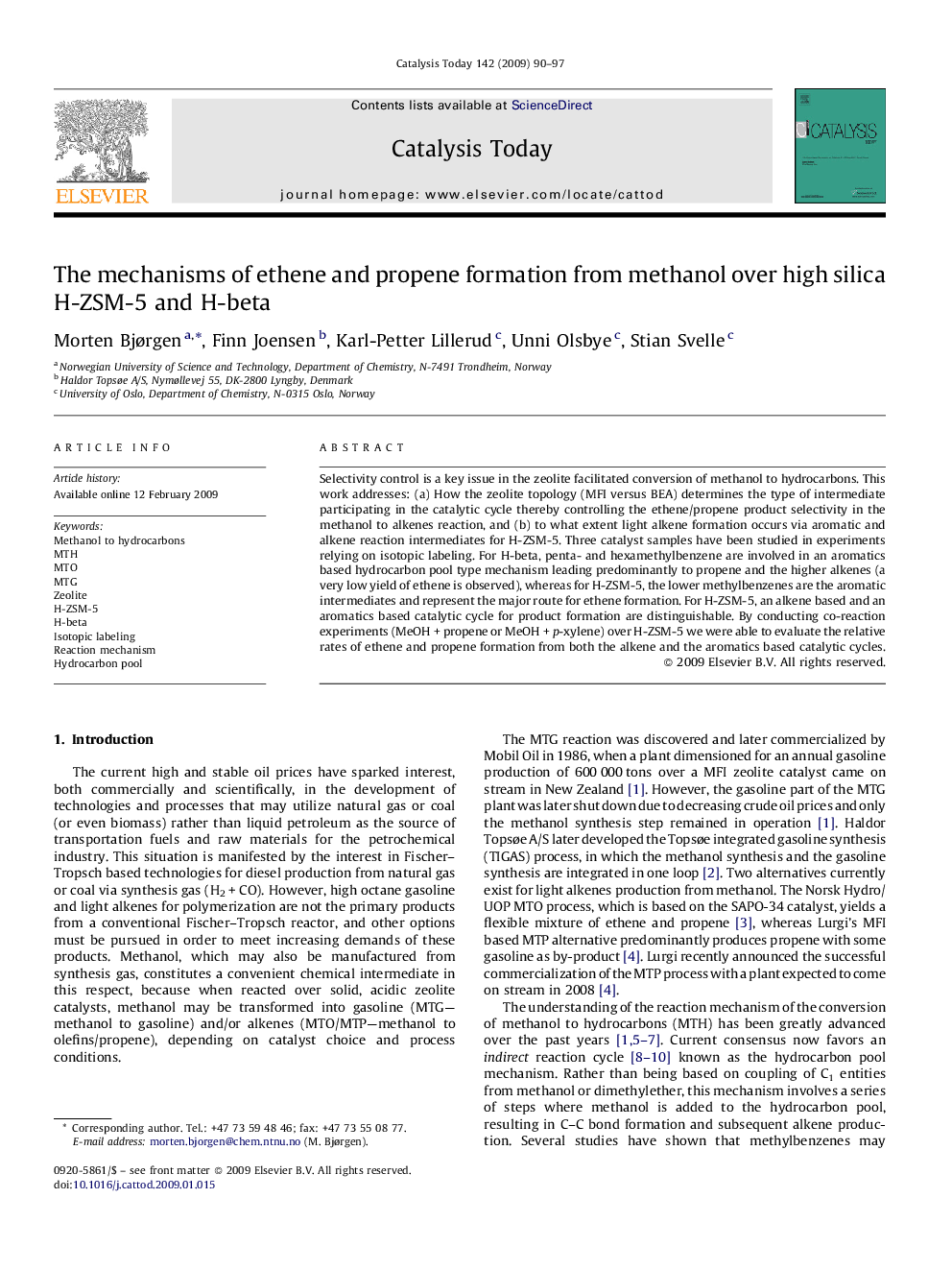| Article ID | Journal | Published Year | Pages | File Type |
|---|---|---|---|---|
| 57598 | Catalysis Today | 2009 | 8 Pages |
Selectivity control is a key issue in the zeolite facilitated conversion of methanol to hydrocarbons. This work addresses: (a) How the zeolite topology (MFI versus BEA) determines the type of intermediate participating in the catalytic cycle thereby controlling the ethene/propene product selectivity in the methanol to alkenes reaction, and (b) to what extent light alkene formation occurs via aromatic and alkene reaction intermediates for H-ZSM-5. Three catalyst samples have been studied in experiments relying on isotopic labeling. For H-beta, penta- and hexamethylbenzene are involved in an aromatics based hydrocarbon pool type mechanism leading predominantly to propene and the higher alkenes (a very low yield of ethene is observed), whereas for H-ZSM-5, the lower methylbenzenes are the aromatic intermediates and represent the major route for ethene formation. For H-ZSM-5, an alkene based and an aromatics based catalytic cycle for product formation are distinguishable. By conducting co-reaction experiments (MeOH + propene or MeOH + p-xylene) over H-ZSM-5 we were able to evaluate the relative rates of ethene and propene formation from both the alkene and the aromatics based catalytic cycles.
